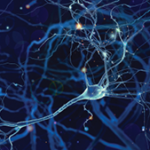In a first-of-its-kind program, the National Institutes of Health (NIH) and the University of Michigan Medical School hosted a conference that brought together internationally recognized pain and rheumatology experts. The two-day program, held on the NIH campus in Bethesda, Md., on December 14-15, 2010, included sessions on the basic science of pain, advances in pain science, government perspectives on pain, improving the pain care of patients, and the special considerations required for patients in special populations. The program was also supported by the ACR. Some highlights of the program, “Pain and Musculoskeletal Disorders: Translating Scientific Advances Into Practice,” are presented here.
Clinical Research into Central Pain Mechanisms in Osteoarthritis
“The definitive treatment for knee osteoarthritis (OA) is total or partial knee replacement. But pain persists in 20% to 30% of patients after surgery. Why?” asked Tuhina Neogi, MD, PhD, associate professor of medicine at the Boston University School of Medicine.
Dr. Neogi explained research into characteristics of advanced OA knee pain, notably the fact that it often occurs at rest or during the night, and that it radiates. “All of these are signs of altered signal processing,” she says. Mechanical and inflammatory stimuli that are characteristic of knee OA pathology can cause neurochemical alterations in the nervous system and alter peripheral and central processing. The result may be central sensitization, which can lead to heightened pain sensitivity. “We wondered if central sensitization could explain pain and persistence in OA,” says Dr. Neogi.
“Mechanical and inflammatory stimuli lead neurons to respond to stimuli in a more intense way or to stimuli they don’t ordinarily respond to,” she says. “Initially, the volume is still modifiable. Eventually, as the theory goes, it’s changed permanently. We want to know if it is modifiable—or is it stuck at this level?”
Compared with men, women are at greater risk for pain undertreatment. “Maybe it’s because women express pain more. When a man finally says something about pain, he’s taken more seriously. On the other hand, a woman’s psychological complaints are taken more seriously than men’s.”
Armed with data from small studies suggesting that central sensitization does occur in OA, Dr. Neogi and colleagues used data from an ongoing multicenter cohort study of 3,000 older adults (aged 50 to 79 years) who had OA or were at high risk for it. Each participant received a comprehensive functional knee assessment as well as radiographs and MRI studies. Central sensitization was specifically assessed by temporal summation. Using a within-person matched-knee approach that they had developed in the course of an earlier study, the team looked at people with evidence of central sensitization in one knee but not the other and determined whether OA accounted for the difference between knees.



